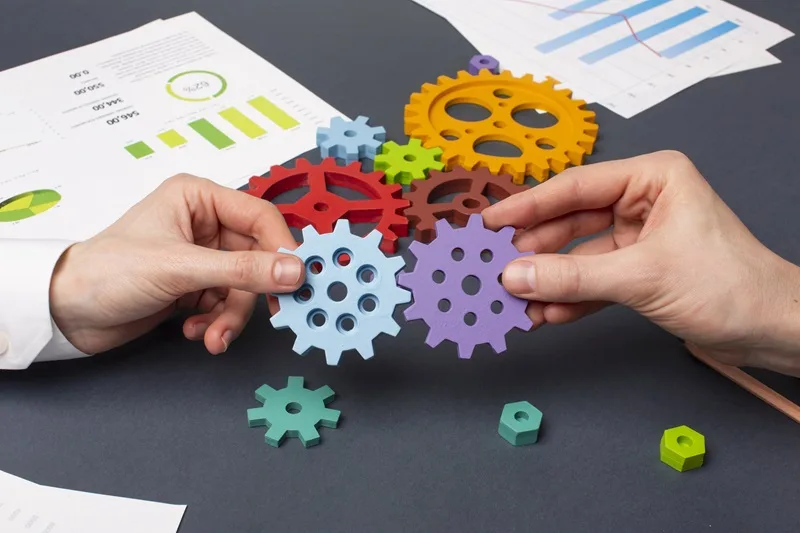Introduction
In the world of process optimization, two key metrics stand out as crucial indicators of efficiency and productivity: cycle time vs throughput time. These two measures, while related, offer distinct insights into the performance of a system or process, and understanding the nuances between them is essential for effective process improvement.
This comprehensive article will delve into the differences between cycle time and throughput time, explore their importance in process optimization, and provide strategies and techniques to analyze and improve these critical metrics.
Understanding Cycle Time and Throughput Time
Cycle time vs throughput time are often used interchangeably, but they represent distinct concepts that provide different perspectives on the performance of a process.
Cycle Time
This is the elapsed time between the start and completion of a single unit or task within a process. It encompasses the time required to complete a specific step or operation, from the moment the work begins until it finishes. Cycle time measures the efficiency of a single process or workstation and often identifies bottlenecks and areas for improvement.
Throughput Time
On the other hand, throughput time measures the total elapsed time from when a customer requests a product or service until delivery. It includes the time required for all the steps in the process, including waiting time, transportation, and any other delays. Throughput time is a measure of the overall efficiency of the entire process. It is often used to assess the responsiveness and customer-centric performance of an organization.
What’s the Difference between Throughput and Cycle Time?
The primary distinction between throughput time vs cycle time lies in their scope and focus:
- Scope: Cycle time focuses on a specific process or operation, while throughput time considers the entire end-to-end process.
- Focus: Cycle time emphasizes the efficiency of a single step or workstation, while throughput time evaluates the overall effectiveness of the entire system.
In other words, cycle time is a micro-level metric that helps identify areas for improvement within a specific process, while throughput time is a macro-level metric that provides insights into the overall performance and responsiveness of the entire system.
Importance of Cycle Time and Throughput Time in Process Optimization
Cycle time and throughput time are crucial metrics in process optimization for several reasons:
- Identifying Bottlenecks: By analyzing cycle time, organizations can pinpoint the specific steps or operations that are causing delays or inefficiencies. This allows them to focus their improvement efforts on the most critical areas.
- Improving Efficiency: Reducing cycle time can lead to increased productivity, reduced waste, and higher overall efficiency within a process.
- Enhancing Customer Satisfaction: Optimizing throughput time can improve the responsiveness and reliability of a process. This can lead to better customer experiences and increased customer satisfaction.
- Aligning with Lean and Six Sigma Principles: Both cycle time and throughput time are fundamental metrics in Lean and Six Sigma methodologies. These are widely used for process improvement.

Factors Affecting Cycle Time and Throughput Time
Numerous factors can influence cycle time and throughput time. These include process design, resource availability, process variability, inventory and work-in-progress (WIP), and organizational factors. The design of a process, including the sequence of steps, resource allocation, and automation utilization, can significantly impact both cycle time and throughput time. Additionally, the availability and utilization of resources such as equipment, materials, and labor can affect the time required to complete each step in the process. Variations in process inputs, environmental conditions, or operator performance can introduce inconsistencies that impact cycle time and throughput time. Furthermore, the level of inventory and work-in-progress can affect the flow of materials and information, influencing cycle time and throughput time. Lastly, organizational factors like policies, procedures, and management practices also play a role in shaping cycle time and throughput time.
How to Measure Cycle Time and Throughput Time
Measuring cycle time and throughput time can be done through various methods, including:
- Direct Observation: Directly observing and timing the duration of individual process steps or the end-to-end process.
- Process Mapping: Creating a visual representation of the process, which can help identify the various steps and their associated times.
- Data Collection: Gathering data from production systems, enterprise resource planning (ERP) software, or other information sources to calculate cycle time and throughput time.
- Simulation: Using simulation software to model the process and analyze the impact of changes on cycle time and throughput time.
Strategies to Reduce Cycle Time and Improve Throughput Time
Improving cycle time and throughput time requires a multifaceted approach. This may include process optimization, automation and digitalization, capacity management, inventory and WIP optimization, and continuous improvement. Process optimization involves streamlining process steps, reducing waste, and eliminating unnecessary activities to improve efficiency. Additionally, implementing automation and digital technologies can reduce manual interventions and improve process speed. Capacity management ensures that resources, such as equipment and personnel, are properly sized and utilized to meet demand. Furthermore, reducing inventory and work-in-progress helps improve flow and reduce lead times. Lastly, adopting a culture of continuous improvement. Using tools like Lean and Six Sigma, allows organizations to constantly identify and address areas for enhancement.
What is an Example of Throughput Time?
A common example of throughput time can be found in the retail industry. Consider a customer who visits a clothing store, selects an item, and proceeds to the checkout. In this scenario, the throughput time would be the total elapsed time from when the customer enters the store until they leave with their purchased item. This includes the time spent browsing, selecting the item, waiting in the checkout line, and completing the transaction.
What is an Example of a Cycle Time?
An example of a cycle time can be found in a manufacturing process. For instance, the production of a specific component. The cycle time in this case would be the duration of a single production step, such as the time required to complete a particular machining operation on a part. This cycle time measures from loading the part into the machine until unloading it, ready for the next step in the manufacturing process.
Tools and Techniques for Analyzing and Improving Cycle Time and Throughput Time
Organizations can leverage a variety of tools and techniques to analyze and improve cycle time and throughput time, including:
- Process Mapping: Creating detailed process maps to visualize the flow of work and identify areas for improvement.
- Value Stream Mapping: Analyzing the flow of materials and information to identify and eliminate waste.
- Queuing Theory: Applying mathematical models to understand the impact of variability and resource utilization on cycle time and throughput time.
- Simulation Modeling: Using simulation software to test and evaluate the impact of process changes on cycle time and throughput time.
- Statistical Process Control: Monitoring and analyzing process data to identify and address sources of variation.
- Kaizen Events: Organizing focused improvement events to rapidly identify and implement cycle time and throughput time reduction strategies.
What is the Difference between Throughput and WIP?
While throughput time and work-in-progress (WIP) are related, they are distinct concepts:
- Throughput Time: As discussed earlier, throughput time measures the total elapsed time from the start of a process until delivering the final product or service to the customer.
- Work-in-Progress (WIP): WIP refers to the inventory of partially completed products or services that are currently in the process. It represents the amount of work that is in the system, waiting to be completed.
The key difference is that throughput time is a measure of the overall process efficiency, while WIP is a measure of the inventory or work-in-process within the system. Reducing WIP can help improve throughput time, as it can reduce bottlenecks and improve the flow of work through the process.
Common Challenges
Optimizing cycle time and throughput time can present several challenges. These include process complexity, variability and uncertainty, organizational resistance to change, data availability and quality, and balancing competing priorities. Highly complex processes with numerous steps and interdependencies can make it difficult to identify and address the root causes of cycle time and throughput time issues. Additionally, factors such as equipment breakdowns, supplier delays, or changes in customer demand. These can introduce variability and uncertainty, making it challenging to maintain consistent cycle time and throughput time.
Implementing process improvements may require changes to established workflows, policies, or organizational structures. This can face resistance from employees or management. Moreover, accurate data collection and analysis are critical for measuring and improving cycle time and throughput time. But organizations may struggle with data availability or quality issues. Lastly, improving cycle time and throughput time may conflict with other organizational priorities. For instance, cost reduction or product quality, requiring careful trade-offs and decision-making.
Conclusion
Cycle time vs throughput time are essential metrics for process optimization. They provide valuable insights into the efficiency and responsiveness of an organization’s operations. By understanding the differences between these two measures, and implementing strategies to analyze and improve them, organizations can enhance their overall productivity, reduce waste, and deliver superior customer experiences.
To learn more about optimizing your organization’s cycle time and throughput time, read our article Objectives and Key Results Software Can Transform Your Business.








Leave a Reply